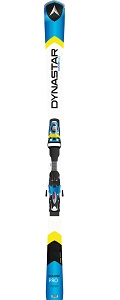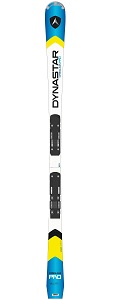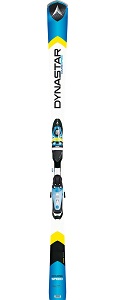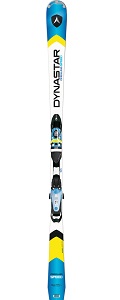
The Dynastar Race range for 2014–2015 is short but a very focused one. The FIS models take the lead since there are more of those models available than there are for the general public. That said, Dynastar offers a very simple yet effective proposition. Just four models, two for long turns and two for short. Its cousin brand Rossignol offers twice as much. And we could also state that the offer is even shorter, just two really different skis seem to be available, and being the main difference between the models, apart from their turn type tendency, the binding system. The range is:
Long turns:
-
Dynastar Speed Course Pro R20 Racing
-
Dynastar Speed Course Fluid
Short turns:
-
Dynastar Speed Omeglass Pro R20 Racing
-
Dynastar Speed Omeglass Fluid
One remarkable aspect in the Dynastar Race range is how little different seems to be the sidecut design on paper. Yet they can be -and actually are- quite different although not as remarkably intended as they are in other brands (again, like its cousin Rossignol). The Speed Course models (inspired in the GS discipline) are in the 16m radius, while the Speed Omeglass (inspired in the SL discipline) are in the 12m radius. Despite the radius turn does not explain a lot about the ski´s behaviour, it´s an orientative data that many (too many people, too much, too often) follow as the main rule of thumb.
The Dynastar Race range has been always noticeable due to their stiffness as well as their tough reactions. I remember the first time I skied on a pair of Speed Omeglass SL skis and nothing has changed that much. Those who have skied the Course models do also come to a similar conclusion. The Dynastar Race range is not very forgiving, it is very focused, for dedicated sporty skiers. And it is very clear and effective in all aspects. Behaviour, design, response, touch and feel are based on the same principles: simplicity and effectiveness.
On the technological side of things, we encounter pretty much the same philosophy. The ski´s construction is the classical sandwich. Wood core, metal to smooth the reactions, figerglass and possibly the very well known aramid, although the brand doesn´t claim its use as it did in the past. The metal employed is the classic titanium and in the sidewalls the also classic melamine / phenol combo.
Apart from highlightning the sandwich construction, Dynastar also talks about another technology, the WC Springblade. This is what the brand has to say about it: “The WC Spring Blade uses varying shapes of metal and fiberglass laminates at staggered lengths to provide a lighter extremity. The unique layered shapes control tip torsion which smoothes out turn initiation and improves full edge contact. The lighter weight tip improves the swing weight of the ski for quick and adaptable turn initiation.”
Which is strangely very similar to what Rossignol explains about their very own Cascade Tip Technology, isn’t it?

 Dynastar Speed Course Pro R20 Racing
Dynastar Speed Course Pro R20 Racing Dynastar Speed Omeglass Pro R20 Racing
Dynastar Speed Omeglass Pro R20 Racing Dynastar Speed Course Fluid
Dynastar Speed Course Fluid Dynastar Speed Omeglass Fluid
Dynastar Speed Omeglass Fluid